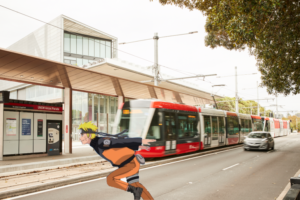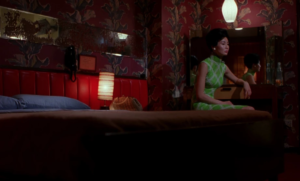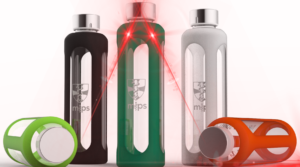
The underreported hospital-acquired infection: being a slave to boring corporate wear
I am a firm believer in “look good, feel good”. Conceited? Self-absorbed? Vain? Self-love, baby. With all the endless possibilities the world can throw at me in one day, I’ve learnt to derive as much happiness from the choices I have control over.
“Professional hospital attire” is a tricky zone, leading the naive to the default options you’d find in a Target workwear catalogue. The result? A young adult awkwardly masquerading as a thirty-something from the corporate world. I don’t know if Silas is the Anna Wintour of MedFac, but surely some fashion advice could be useful. The great Talley found enough space to insert a subtle flex about his black belt in both Tae Kwon Do and Tang Soo Do. Perhaps he knew that “The Guy who is Always Naked (besides the 4 page special on trendy hospital attire) in Talley and O’Connor” wouldn’t be the best name for a meme page.
On my first hospital day of coursework, I appeared uncomfortable at rest. I was inadequately exposed for the summer heat of South West Sydney in a carefully ironed long-sleeved button-up and meticulously lint-rolled pencil skirt. I appeared to be in respiratory distress as I raced up the fire escape stairs to chase the doctors on their ward round. An assessment of gait revealed a Parkinsonian shuffling pattern as permitted by the confines of my pencil skirt. My provisional diagnosis? A lesson to be learnt. Whilst my default outfit was passable for fortnightly two-hour hospital sessions in Phase 1, I needed a better plan to combat third year.
Numerous studies have been conducted into how the attire of healthcare professionals influenced patient perceptions. One came to the conclusion that formally dressed doctors were regarded as more trustworthy, whereas patients were more at ease with those in more casual clothing. In a paediatric population, they regarded physicians in professional wear and white coats as more competent, but physicians in t-shirts and slacks as more friendly. However, with the varied categorisation of the same pieces of clothing into differing levels of formality, it is difficult to draw conclusions. With our competency already established within the opening line of “Hi I’m a medical student”, how do we juggle the perception of looking professional, yet approachable? For me, I’ve relied on a general inspection of the student common room and doctors on the wards for more expressive yet acceptable fashion inspo.
Like the same three variations of suits you see at MedBall, men’s hospital fashion is equally as thrilling. At any given time, you can walk into a common room and find at least one male in beige chinos and a sky-blue button-up. Most doctors on the wards seem to model the rotation of neutral coloured long-sleeved button-ups, slacks and black or brown dress shoes. However, sometimes you’ll be treated to a cheeky flash of silly dress socks to remind you that they’re not a regular doctor, they’re a cool doctor. On rare occasions you may find blazers and ties – I remember admiring a fitted cornflower blue plaid blazer. When I asked a fellow medical student if he’d ever rock a blazer, he replied: “Nah, I don’t want to be mistaken as someone important.” Fair enough.
For male fashion, I’ve seen personality injected through mixing neutrals with bold patterned shirts or coloured pants. Dress shirts can also be quirky through going with different materials e.g. linen or different collars, such as a Mandarin collar. Importantly, the key to dressing well is having clothes that actually fit properly! Slim, well-fitting shirts tucked nicely into pants will give off a put together, confident vibe. In the winter, pairing a funky sweater over a dress shirt sets you away from the crowd. Furthermore, a sleek pair of polished boots in either a dark brown or black save an outfit from looking too overly dressy. Crazy socks are a must.
Female hospital fashion is more variable, free from the expectations of always needing a collared shirt. Instead, a general consensus agrees that modesty through avoiding low necklines and high hemlines will spare you any glances of judgement. As such, most females I’ve observed play it safe with a neutral combo of a blouse teamed with skinny trousers or a pencil skirt. After scanning various wards I’d have to give my favourite dress award to female paediatricians. Cheery flouncy skirts and cardigans result in them being easily mistaken for kindergarten teachers, if not for the coloured steths every other speciality seems to avoid. (I for one regret the “professional” black steth I purchased in first year. Ceil blue I am coming back for you, I promise).
For me, I’ve learnt to rely on more colourful, flowy garments that permit the full range of movement needed to squat down and inspect the foot ulcers of a tired, seated patient. I’ve gained an appreciation for Asian fashion as their modest cuts make their casual blouses and dresses more hospital-appropriate. To compensate for their boxy drape, a waist belt with a funky buckle is a must. From western stores, such as Princess Highway, French Connection or Zara, patterned trousers, spacious culottes and printed blouses add personality to a potentially boring outfit. Finally, a comfortable pair of shoes with quirky details means you’re ready to take on the world. If you manage to last more than 4 hours of a hospital session in heels, you gain my utter respect. I once remember seeing a doctor in sky-high stilettos, but this amazement was shattered when I saw the bandaids poorly concealing the blisters she had developed.
To fight against the textile industry’s vendetta against placing functional pockets on female clothing, a trusty side bag is a must for storing examination gadgets, notebooks, your mobile phone and a snack for never-ending clinic sessions. Your hospo friends will get sick of taking these items from your shaky hands to hold onto them every time you’re asked to perform an examination. Select an easy “rummageable” bag like a drawstring bucket bag, or one with many zips and compartments. You’ll need to be able to speedily fish out a pen to show that whilst you can’t properly interpret an ECG or confidently comment on lung sounds, you at least contributed something to the ward round. Also, don’t go for a fancy, expensive bag. You don’t know what gastro week can throw (up) at you. Unfortunately, insufficient data means I can’t suggest a male alternative. Apparently, someone had once attempted to style a bum bag into their everyday hospital wear. Fortunately, he was a St George student and thus not mistaken for a random local the way that a South West Sydney student would have been.
So why am I so fixated on encouraging fun, expressive hospital fashion? I once approached an elderly lady hoping she’d allow me to listen to the heart murmur her patient progress notes had documented. Before I could introduce myself, she gave me a big smile and gestured at the sunflowers on my green dress. “So beautiful!” This was the first time a patient or doctor had ever commented on what I wore. Seeing her face light up and how genuine she was made me realise the underrated power of fashion.
To drive my point home, I’ve estimated that I’ve spent at least 50% of my clinical time plastered to the ward walls waiting for my accompanying doctor. Thus, why shouldn’t I embrace my role as decor and bring some vibrancy to the glaringly white-walls of the hospital?

















































































































